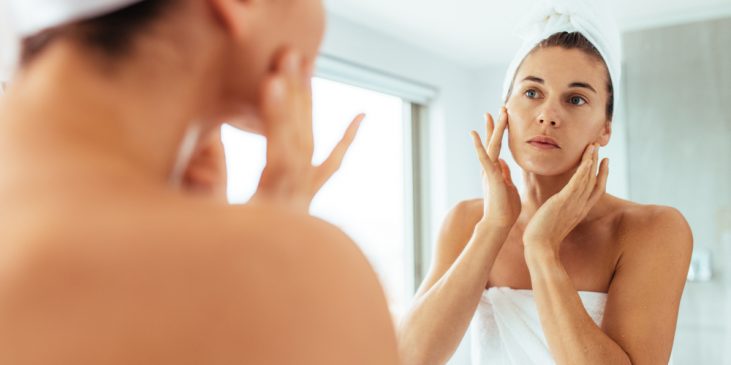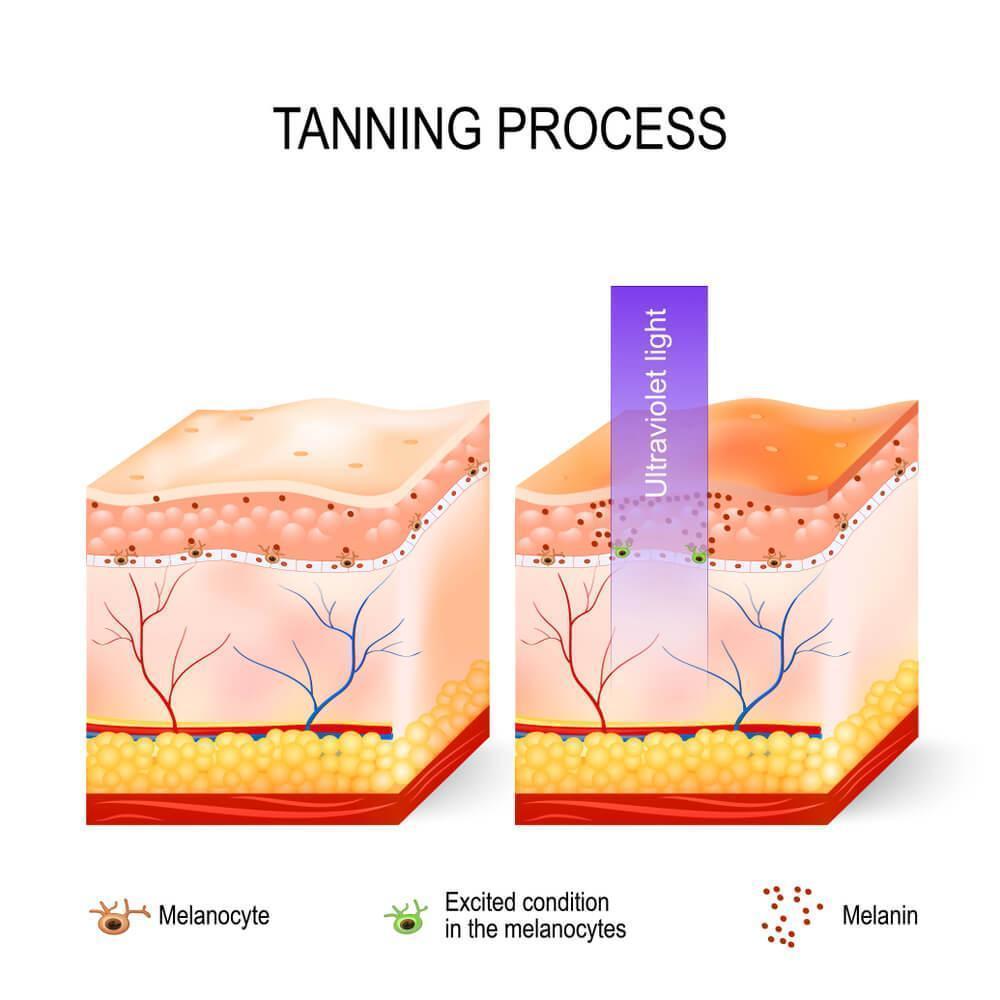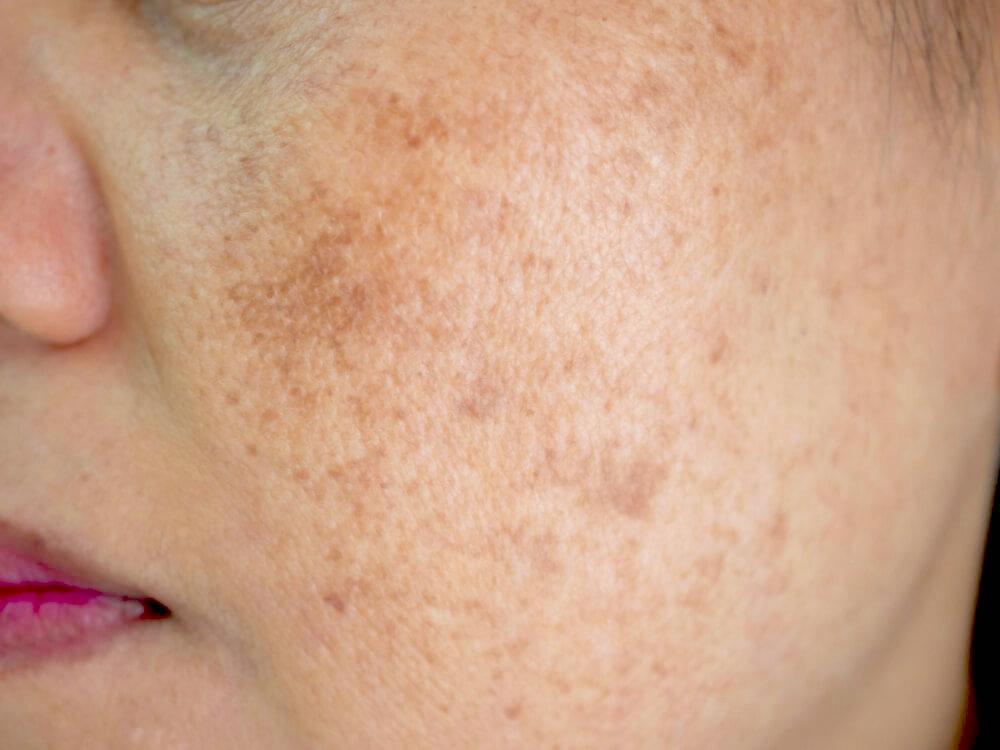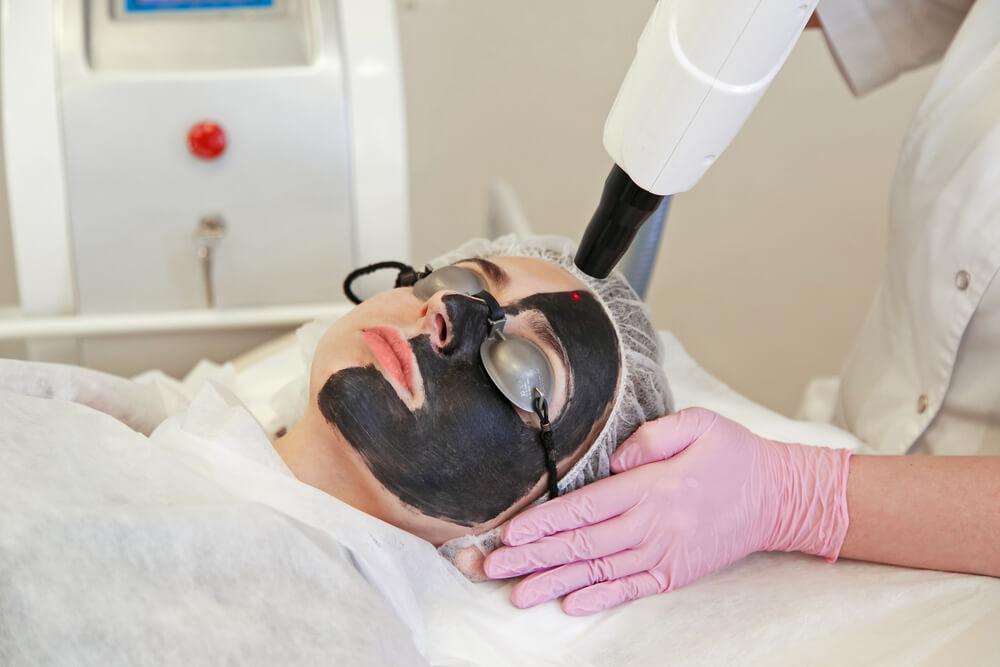Most people, regardless of their skin color have dealt with or are likely to encounter dark spots, uneven skin tone, or dark blemishes that appear on the skin at some point in their lifetime. These are linked to an individual’s skin pigmentation or melanin.
Skin pigmentation is also commonly used to refer to skin hyperpigmentation, the condition caused by excess pigmentation and characterized by the aforementioned skin tone issues. Hyperpigmentation is usually harmless to your health. Unfortunately, the same cannot be said of its impact on the beauty of your skin and self-confidence.
Knowledge on the subject can help you to either keep off the condition or deal with it should that need arise. To help you with this, here is everything you need to know about skin pigmentation.
Melanin and Pigmentation
Melanin is the body’s natural pigment. It occurs in different forms and amounts and determines skin tones and the color of hair and eyes. The level and location of melanin in your skin can also define various pigmentation-related skin conditions.
In the skin, melanin is produced by cells known as melanocytes. The process of melanin production, also known as melanogenesis, is made possible by the pigment’s ability to absorb UV radiation.
To this end, melanin causes the skin to darken for people living in climates where the sun is hotter or for people who spend large amounts of time exposed to sunlight.
When melanin is completely absent or greatly reduced, conditions such as vitiligo and albinism present.
Why Your Body Produces Melanin
As noted, the melanin absorbs light. On top of this, it is able to dissipate almost 100% of the absorbed radiation.
Why is this important?
Melanin helps you to fight photodamage by strengthening your skin’s natural barrier. In the presence of UV rays, melanogenesis is initiated. This causes your skin to change color into a darker tone. The tan that you get from sunbathing, or exposure to tanning lamps, is a direct result of melanin activation.
Although tanning is a protective biological response, it is associated with negative health effects. Chief among these are sunburns and increased susceptibility to malignant melanoma, a type of skin cancer that affects melanocytes.
Additionally, photodamage, the structural degradation of your skin due to chronic exposure to sunlight results in hyperpigmentation, wrinkling, and roughness of the skin, the very indicators of advanced skin aging.
Excess Pigmentation or Hyperpigmentation
Hyperpigmentation is the darkening of small or large areas of the skin or nails. Its caused by excessive production of melanin. The term is used to describe discoloration brought about by conditions such as melasma, acne spots, skin trauma, and sun damage.
Hyperpigmentation can also result from dermatological procedures such as laser resurfacing. The use of toxic or potent topical cosmetics can also cause spotty discoloration on your skin. Such hyperpigmentation has been observed from the use of mercury ointments and long term use of hydroquinone creams.
Here are some of the most common types of hyperpigmentation:
Photoaging
Photoaging is a direct side effect of spending too much time in the sun. UV rays stimulate melanocytes in the skin to produce more melanin. The increase in pigmentation is aimed at giving your skin more resistant to harmful UVA and UVB rays.
Photoaging not only discolors the skin but it’s also responsible for structural degradation. This is a result of damage to collagen and elastin, the fibers that give your skin elasticity and firmness. Impairing these support structures leads to;
- Development of wrinkles around the eyes
- The pronounced appearance of fine lines around the lips, and
- Age spots on areas usually exposed to the sun, like the hands
Sunspots
These are flat brown blemishes that develop due to chronic exposure to sunlight. They range in color from brown to black and are commonly found on the hands, shoulders, forehead, and face. If you are bald, these spots can also occur on your scalp.
Sunspots are also known as age spots, solar lentigos, or senile freckles. They are also known as liver spots, a name that was derived from a misconception that they are associated with liver problems.
This form of skin pigmentation is commonly seen in people aged 40 and above. Reason being, as the skin ages, its ability to regenerate from UV damage is reduced. Sunspots are harmless and as such require no treatment. It is, however, advisable to prevent and treat them since they can conceal symptoms of skin cancer.
Melasma
Melasma, also known as pregnancy mask, is a type of hyperpigmentation mostly seen in pregnant women. It presents as dark and blotchy patches on the face. The pigmentation concentrates on the forehead, cheeks, and jawline.
The condition is also known as chloasma and ranges from brown to blue-gray patches depending on your skin color. Causes of melasma include hormonal imbalance and genetics. Chronic exposure to sunlight can also trigger the condition if the underlying causes already exist.
When it comes to treatment, it’s advisable to try it after the pregnancy; the reason being, it’s harder to deal with the condition when pregnant due to the presence of hormonal triggers. Also, most melasma treatments are contraindicated for pregnant women.
Post-Inflammatory Hyperpigmentation (PIH)
PIH is a type of skin discoloration that occurs after injuries heal. It manifests as patches of brown to black patches on otherwise flawless skin. Pimples, acne, cuts, and other forms of skin trauma such as neurodermatitis (localized scratch dermatitis) are the main causes of this type of pigmentation.
Hyperpigmentation due to inflammation gradually goes away on its own. That said, it may take up to 4 months before such a spot disappears. Worse still, the condition may persist if your skin is aged or photodamaged- hence the need for skincare.
The appearance of your skin can also be made worse by the subsequent occurrence of Post Inflammatory Erythema (PIE)- a condition that is sometimes confused with PIH.
How does PIH differ from PIE?
- While post-inflammatory hyperpigmentation is a result of excess melanin, PIE occurs when capillaries produce excess blood geared towards healing an injury. The excess blood leads to the formation of reddish-pink patches on the skin.
- Although both conditions result from inflammation, PIH is common in people with dark skin while PIE is more pronounced on light-skinned people.
How to Prevent the Appearance of Hyperpigmentation
Without question, hyperpigmentation is unsightly. Most preventive measures incorporate shielding your skin from direct sunlight and fortifying the feel of your skin. Below are ways to prevent the appearance of hyperpigmentation.
Following the 5-Step Skincare Routine

Routine is an important aspect of skincare. This should be a regimen that you have developed over time; one that works for your skin type or a specific condition. Here’s a basic routine to follow if you don’t yet have one:
Step 1. Cleansing:
This involves removing any dirt, makeup, and oil buildup from the skin. Cleansing can be done using water alone or with a gentle cleanser, such as the Introstem Stem Cell Mousse Cleanser.
Step 2. Toning:
This is an important step aimed at calming the feel of your skin. Hydrosols infused with essential oils will do as perfect toners, since the oils help in deep penetration of other products. You could also give the Introstem Stem Cell Facial Toner a try.
Step 3. Applying Serums and Actives:
Serums are packed with nutrients for your skin. These include vitamins, amino acids, organic acids, and minerals that leave your skin looking softer, youthful, more evenly toned, and textured.
The Stem Cell Night Repair from Introstem is a great one for tackling the appearance of sun damage.
Step 4. Moisturizing:
Moisturizers help in locking in moisture and the serums. This keeps your skin well hydrated and allows the serums and actives time to work. Depending on the type of your skin, moisturizers can be in the form of creams, gels, or oils. The Stem Cell Day Moisturizer from Introstem is packed with beneficial ingredients, making this a popular option.
Step 5. Applying Sunscreen:
If you want to keep the appearance of hyperpigmentation at bay, sunscreen is your best friend rain or shine. Choose one with an SPF of at least 30 and for protection from both UVA and UVB rays, choose a broad spectrum sunscreen.
Do Dark-Skinned People Need Sunscreen?
Yes, they do. While dark-skinned people contain more melanin which translates to more protection, this protection only goes to a certain extent. Use of sunscreen is therefore recommended for all.
Avoiding Exposure to the Sun
Besides using sunscreen, you should avoid prolonged exposure to sunlight using other measures. If you can, keep away from the sun during the hours when it is hottest- between 10 a.m and 4 p.m. Other measures include wearing pants, long-sleeved tops, wide-brimmed hats, and sunglasses.
Exfoliating Regularly
Exfoliation entails getting rid of or sloughing off dead skin to reveal skin that looks newer and brighter. When left to accumulate, dead skin makes your skin look dull. That’s not all; when the flakes combine with dirt and sebum, you might get clogged pores and acne breakouts, which are just a step away from skin hyperpigmentation.
Exfoliation can be done manually using loofah sponges, microdermabrasion devices, body/facial brushes, facial scrubs, and flannels. Alternatively, you can do it chemically using exfoliants like lactic acid, papain, glycolic acid, and salicylic acid to dissolve dead skin cells.
Our favorite exfoliant? The Introstem Stem Cell Facial Peeling. It’s gentle yet powerful at the same time!
Treatments for Hyperpigmentation
If for some reason you find yourself dealing with hyperpigmentation, you have the option of waiting for the condition to resolve on its own or seeking the available treatments. If patience is not your greatest virtue, here are some treatment options for hyperpigmentation.
Topical Skin Lightening Creams/Serums
These creams or serums formulated with active ingredients that work by inhibiting melanin production on the hyperpigmented areas of the skin. This leads to the gradual lightening of these areas and eventual restoration of original skin tone.
Common active ingredients in these products include hydroquinone and corticosteroids which are unfortunately associated with a host of health issues with long-term use. Safer alternatives include formulations that incorporate natural active ingredients such as arbutin, kojic acid, vitamins A, B and C, licorice extract, and tranexamic acid among others.
Laser Skin Lightening
This involves the use of concentrated beams of light to destroy pigmented or damaged cells. This triggers a skin resurfacing process, consequently leading to lighter, smoother and even skin. It is one of the most expensive and most effective treatments.
Depending on the severity of the hyperpigmentation, your skin color, and the results that you are looking for, laser treatments vary in intensity and types. The treatments should only be done by qualified personnel, a great factor to consider when choosing a laser clinic.
Chemical Peels
Chemical peels involve the application of an acidic solution on the skin to trigger the peeling off of the blemished layer(s) and reveal new and lighter cells. They vary from superficial, medium and deep peels. Superficial peels are the mildest while deep peels tend to affect several skin layers. Medium peels lie somewhere in the middle.
The peeling off of the skin layer(s) gives rise less pigmented and less blemished skin. These peels are usually done at a dermatologist’s clinic but there are mild DIY kits that you can do at home.
Microneedling
The procedure involves the puncturing of the skin using a steel roller that’s fitted with numerous microneedles. The process, also referred to as collagen induction therapy is meant to trigger a natural wound healing and skin regeneration process which also includes collagen production, hence ridding your skin of the blemished layer.
Often times, the procedure is combined with topical treatments such as vitamin C or hyaluronic acid as the injuries provide channels for better infusion. In the recent past, the combination of microneedling with platelet-rich plasma (PRP), a special healing serum drawn from someone’s blood has produced even better results.
Skin pigmentation is your natural skin coloring. Several factors can lead to the appearance of excess pigmentation, consequently leading to the look of an uneven skin tone, dark spots, blotches, and other discolorations. The greatest secret lies in preventing this from happening in the first place by practicing proper skin care and UV protection. Unfortunately, bad things keep on happening to good people and despite your efforts, you might find yourself face to face with visible hyperpigmentation.
While this may not harm your health in any way, it is not exactly flattering for your Instagram shots. Armed with the patience of a saint, you can wait for your visible dark spots to resolve on their own. Alternatively, you can seek treatments that have been proven to work. After all, your skin is one of your greatest assets of beauty and it deserves all the love it can get.







0 comments on “Everything You Need to Know About Skin Pigmentation”